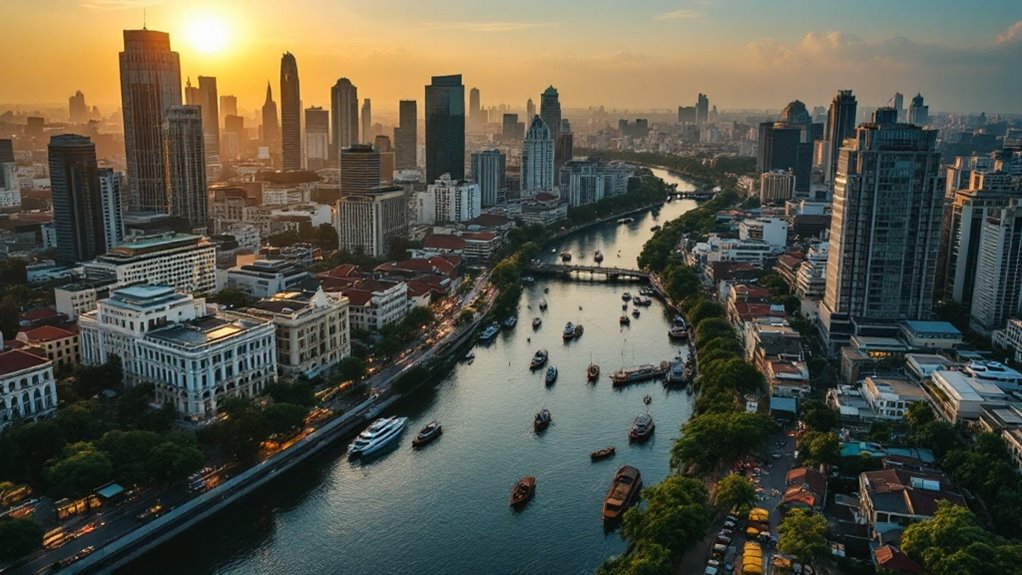The China-Laos high-speed railway, launched in 2021, connects Kunming to Vientiane and passes through Luang Prabang, cutting travel time between key cities from eight to two hours. This increased connectivity has substantially boosted tourist inflows, improved access to Luang Prabang’s cultural attractions, and stimulated local businesses through heightened demand. With fast trains, frequent daily departures, and expanded market access, the railway is reshaping the region’s tourism economy in tangible ways, as further details about its broader impact illustrate.
Launched in 2021, the China-Laos Railway represents a significant advancement in transportation for Laos, particularly benefiting the city of Luang Prabang. This high-speed railway connects Kunming in China with Vientiane, the capital of Laos, covering a total length of approximately 1,035 kilometers, of which around 422 kilometers are within Laos. By reducing the travel time between Luang Prabang and Vientiane from eight hours to roughly two hours, the railway has dramatically improved efficiency and convenience for travelers.
This improvement in connectivity has made Luang Prabang, a UNESCO World Heritage site, far more accessible to both domestic and international tourists. The increased accessibility has directly contributed to a noticeable rise in tourist numbers, bolstering the city’s tourism industry. Faster and more reliable travel options have enhanced the appeal of Luang Prabang’s renowned cultural and historical attractions, drawing more visitors, especially during major festivals such as the Lao New Year. Passengers should be aware that strict security checks are enforced at train stations, and duty-free items such as alcohol may be confiscated if opened.
Improved rail connectivity has made Luang Prabang more accessible, driving tourism growth and attracting visitors to its celebrated cultural and historical sites.
Local businesses, particularly small shops and restaurants, have benefited from an expanded customer base, as the railway allows more people to visit and participate in celebrations. The railway’s operations include five daily trains, offering both fast and normal travel options with varying speeds—fast trains reach up to 160 km/h, while ordinary trains operate at 120 km/h. Multiple seat classes cater to different budgets, and scheduling is managed to optimize passenger convenience. Advance booking is recommended to secure seats, especially during peak times when the railway is most popular.
Economically, the railway has increased tourism revenue and supported job creation in tourism and related sectors. Local commerce has also gained from improved goods transportation, as businesses now have better access to larger markets. In addition, the Laos-China Railway’s indirect connection to Thailand, via a new route starting in Bangkok, enhances regional travel opportunities. Travelers can reach Vientiane by train from Bangkok, with a short taxi transfer to the LCR station, facilitating further journeys to Luang Prabang.
However, challenges remain, including limited ticket availability, lack of a thorough online booking system, and language barriers. Despite these limitations, the China-Laos Railway continues to transform Luang Prabang’s tourism landscape, supporting sustained economic and infrastructural growth.









